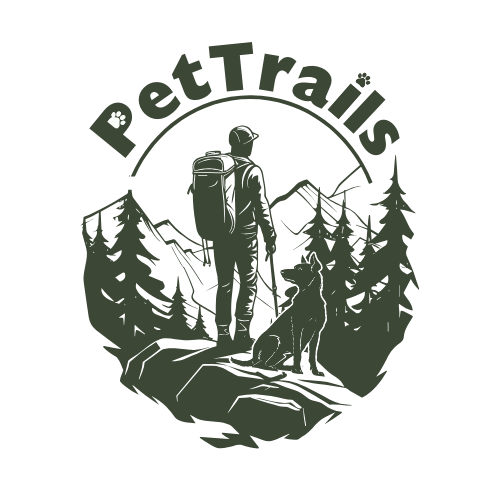
First Aid Scenarios for Trail Dogs: What Every Owner Should Know
Share
You’ve already learned the fundamentals of trail first aid (Trailside First Aid) and built your kit (DIY First Aid Kit Guide). But some emergencies go beyond basic cuts, scrapes, and overheating. These first aid situations require fast, precise action, and preparation well before you hit the trail.
1. Snake Bites & Envenomation
High-Risk Regions:
- Southwestern US (AZ, NM, TX, Southern CA)
- Southeastern US (FL, GA, Carolinas)
- Midwest prairie zones
- Select regions of the Pacific Northwest
Symptoms:
- Sudden yelp or jump backward
- Rapid localized swelling
- Bruising and skin discoloration near the bite site
- Drooling, weakness, possible collapse
- Neurological signs in severe cases
What to Do:
- Keep your dog calm and immobile to slow venom spread.
- Carry your dog; do not allow walking.
- Do not apply ice, tourniquets, or attempt any venom extraction.
- Mark the edge of swelling every 15 minutes to monitor progression.
- Seek emergency veterinary care immediately. Anti-venom may be required.
Note: Rattlesnake vaccines may reduce severity but are not a substitute for immediate veterinary care.
2. Foxtails, Grass Awns & Barbed Seeds
High-Risk Regions:
- West Coast grasslands
- Midwest prairies
- Mountain foothills in dry seasons
- Open fields and tall grasses nationwide
Causes:
-
Sharp seed structures that embed into skin, paws, ears, eyes, nose, or lungs.
Symptoms:
- Intense sneezing or nasal discharge
- Head shaking or tilting
- Constant licking of paws
- Swelling, abscess formation
- Eye squinting or discharge
What to Do:
- Do not probe or attempt to remove embedded awns yourself.
- Gently flush eyes with sterile saline if superficial.
- Seek veterinary attention for any suspected embedding.
- Act quickly to prevent deep migration into tissue or organs.
Preventative Tip: Perform full fur, ear, and paw inspections after hikes in dry, grassy areas.
3. Porcupine Quills
High-Risk Regions:
- Northeastern US
- Upper Midwest
- Rocky Mountain regions
- Northern forests and Canada
Symptoms:
- Quills embedded in face, mouth, paws, or chest
- Vocalizing or shaking head
- Bleeding or swelling at puncture sites
What to Do:
- Do not attempt removal on the trail — broken quills can migrate internally.
- Stabilize your dog and minimize movement.
- Seek veterinary care for removal under sedation to prevent breakage and internal damage.
4. Eye Penetrations & Corneal Ulcers
High-Risk Regions:
- Dense brush and undergrowth trails
- Bushwhacking routes
- Windy or dusty environments (deserts, plains)
Symptoms:
- Squinting, tightly shut eye
- Redness or cloudiness in the eye
- Excessive tearing
- Pawing at face or rubbing eyes
- Visible injury or foreign object
What to Do:
- Prevent additional trauma by restricting rubbing or pawing (use an e-collar if available).
- Flush gently with sterile saline.
- Do not apply ointments unless prescribed.
- Seek veterinary ophthalmologic care immediately.
5. Toxic Ingestions (Non-Plant)
High-Risk Regions:
- Campsites and trailheads
- Urban and suburban parks
- Pacific Northwest (high mushroom concentrations)
- Coastal areas (dead marine life and fish)
Common Culprits:
- Carrion (dead animals)
- Human food waste (chocolate, raisins, gum, xylitol)
- Antifreeze or chemical spills
- Wild mushrooms
Symptoms:
- Vomiting or diarrhea
- Weakness, lethargy
- Seizures or tremors in severe cases
- Disorientation or unsteady gait
- Excessive salivation
What to Do:
- Prevent any further ingestion.
- Contact your veterinarian or pet poison hotline immediately (ASPCA Poison Control: 888-426-4435).
- Do not induce vomiting unless directly instructed.
- Retain any packaging or samples to aid treatment.
6. Joint Dislocations & Orthopedic Injuries
High-Risk Regions:
- Rocky and mountainous terrain (Appalachians, Rockies, Sierras)
- Steep slopes and loose scree fields
- Cliff edges or unstable embankments
Symptoms:
- Inability or refusal to bear weight
- Visible joint deformity or unnatural limb position
- Audible yelping or signs of acute pain
What to Do:
- Do not attempt to reset or manipulate the joint.
- Stabilize the dog and avoid unnecessary movement.
- Use a sling, blanket, or carrier for transport if needed.
- Seek immediate veterinary orthopedic care.
7. Sudden Collapse & Shock
High-Risk Regions:
- High-altitude hikes
- Extreme heat or cold environments
- Venomous snake habitats
- Remote backcountry locations
Symptoms:
- Pale or gray gums
- Weak, rapid pulse
- Cold paws or ears
- Labored or irregular breathing
- Loss of consciousness
What to Do:
- Lay dog on their side; elevate hindquarters slightly if safe.
- Keep the dog calm, warm, and quiet.
- Do not give any food or water.
- Transport immediately to an emergency veterinary hospital.
Know When to End the Hike
If any of the following occur, end the hike immediately and seek veterinary care:
- Collapse or unconsciousness
- Difficulty breathing
- Seizures or uncontrolled shaking
- Severe bleeding
- Inability to walk
Build Full Preparedness
- First Aid Basics: Trailside First Aid for Hiking Dogs
- First Aid Kit Guide: DIY Dog First Aid Kit for Hiking
Closing Thought
Advanced trail emergencies aren’t common, but they escalate quickly when they happen. Training yourself for these situations allows you to act fast, stay calm, and give your dog the best possible outcome, no matter how far from home you are.
